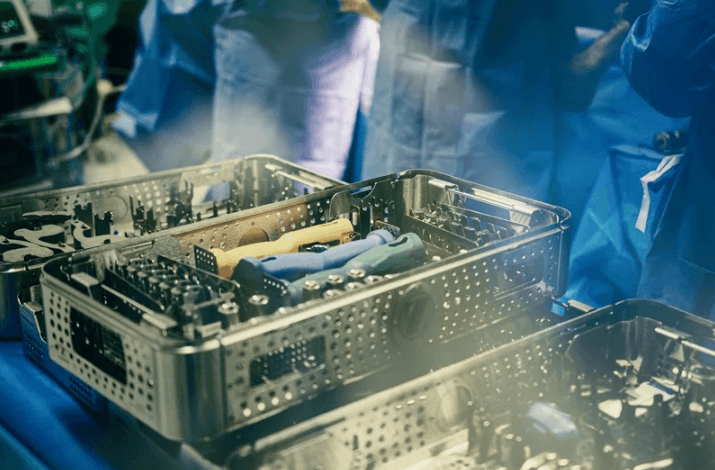The growth of surgical robotics has transformed soft tissue procedures worldwide. But what about bones, joints, and the spine?
These complex, high-impact areas of the body demand a different kind of surgical precision—and that’s where hard tissue robotics comes in.
While the industry has made significant strides, the tools available for orthopedic and spine surgeons still fall short. Too often, hospitals are left choosing between limited-use systems, closed implant ecosystems, or technology that simply hasn’t kept pace.
In this article, we’ll break down:
- What hard tissue robotics actually means
- Where traditional systems are falling behind
- How this space is shifting rapidly
- Why building better, smarter solutions is non-negotiable for hospitals and surgeons alike
The Basics: What Is Hard Tissue Robotics?
Hard tissue robotics refers to robotic systems designed to assist in procedures involving rigid, dense structures like bones and joints.
These systems are used in:
- Orthopedic surgery (e.g., hip and knee replacements)
- Spinal surgery (e.g., vertebral fixation, decompression)
- Fracture reduction and stabilization
Key Features:
- High-Precision Cutting and Drilling: Robotic arms can be pre-programmed for consistent bone work
- Image-Guided Navigation: Integrated with 3D imaging like CT or intraoperative C-arms
- Improved Accuracy: Leads to fewer complications, better implant placement, and faster healing
- Minimally Invasive Options: Smaller incisions mean reduced pain and recovery time
Where the Industry Is Falling Behind
Despite promising growth, the field is far from optimized. Here are the biggest pain points still plaguing hospitals and orthopedic surgeons:
1. Single-Application Robots
Most platforms are built to solve one problem
Hospitals are forced to invest in multiple systems for different procedures
This results in a crowded OR and inconsistent training across staff
2. Locked-In Ecosystems
Many robotic systems are tied to specific implant brands
Surgeons have little flexibility to choose their preferred tools
Increases long-term costs and reduces purchasing freedom
3. Limited AI or Machine Learning
Current systems lack adaptability
Cannot respond in real-time to surgical changes or complex anatomy
4. Slow Setups and Workflow Disruption
Many systems require time-consuming calibration
Surgeons and staff face steep learning curves, leading to delays
5. Poor ROI for Hospitals
High upfront costs with limited functionality = weak value proposition
Difficult to justify multiple systems with overlapping capabilities

What Makes Hard Tissue Robotics Different from Soft Tissue Robotics?
The two operate in entirely different surgical environments. Here’s how:
Soft Tissue Robotics:
• Deals with organs and pliable structures
• Requires dynamic, real-time adjustments
• Used for procedures like prostatectomy, general surgery, and gynecology
Hard Tissue Robotics:
• Designed for predictable, dense anatomy like bone
• Focuses on micro millimeter accuracy in cutting and drilling
• Prioritizes strength, durability, and exact replication
Both have value—but the technology powering soft tissue robotics has outpaced that of hard tissue for too long.
A Market Ready for Disruption
The demand for orthopedic and spine procedures is only increasing:
- Aging populations are requiring more joint replacements
- Sedentary lifestyles have led to rising spine-related surgeries
- Surgeons are burned out and need tools that streamline performance
What the Market Needs:
- Versatile Systems: One platform that adapts to multiple procedures
- Agnostic Capabilities: Compatibility with a variety of implants
- Better Imaging + AI: Real-time surgical insights
- Reduced Footprint: A single system that replaces several
- Stronger ROI: Lower total cost of ownership for hospitals
Why LEM Surgical Is Watching Closely
At LEM Surgical, we believe this isn’t just a market opportunity—it’s a responsibility. The industry must do better.
We’re listening to orthopedic leaders. We’re mapping the gaps. While our system is not yet FDA-approved, we’re building for what hospitals actually need.
Stay tuned as we continue to share:
- Data-driven trends from orthopedic robotics
- Thought leadership from surgeons and engineers
- Tools and strategies for smarter OR decisions
Follow Us for More on Hard Tissue Robotics
As the industry shifts, hospitals and surgeons must demand more:
- More flexibility
- More efficiency
- More intelligence
The next evolution in surgical robotics is coming. Will you be ready?
→ Visit lemsurgical.com for insights and updates, and to stay in the loop as the future of hard tissue robotics unfolds.
